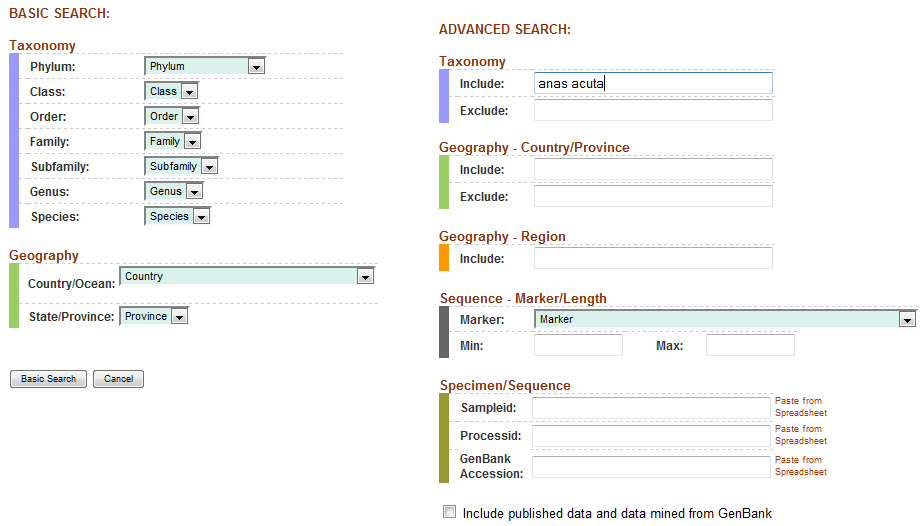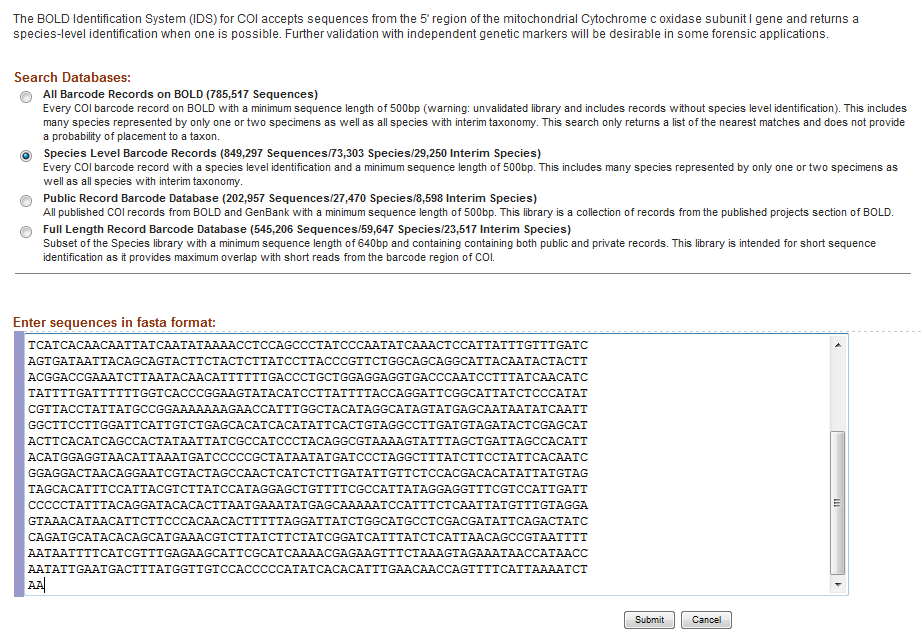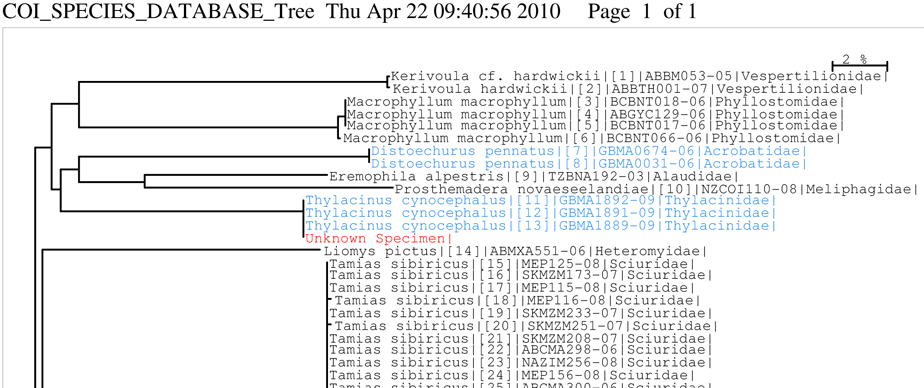Barcode Of Life Data Systems
The Barcode of Life Data Systems (BOLD) is an online workbench that aids collection, management, analysis, and use of DNA barcodes. It consists of 3 components (Management & Analysis, Identification Engine, and External Connectivity) that each address the needs of various groups in the barcoding community. BOLD aims at barcoding genomes with the goal of enabling researchers to easily identify and catalogue organisms.
Database search
The BOLD Management & Analysis service offers a database of records that can also be searched by a number of criteria, also allowing a tree-based taxon search:

This will lead to a results site with links to specimen and sequence records. The specimen records include sample IDs, taxonomy information, specimen details such as tissue type, sex and life stage, but also collection details such as collector, date, elevation or depth of the collection site. Some records are accompanied by photographs of dorsal and ventral sides of the specimen as well as a world map displaying collection sites.
The sequence records hold the barcode ID of the associated sample ID. It also holds information about the sequencing runs, e.g. date, site, primers used, and quality. The nucleotide and amino acid sequence and an illustrative barcode follow.
Identification engine
The BOLD Identification System (IDS) for COI accepts sequences from the 5' region of the mitochondrial Cytochrome c oxidase subunit I gene (for animals) and returns a species-level identification when one is possible. Fungal identification using the ITS gene and plant identification using the rbcL & matK genes is also available. It offers a sequence input field and search options:

This returns a list of the top matching sequences along with a similarity evaluation. It also offers links to a species page as well as to "tree based information". This offers, among other options, a tree of all related species found in the database and a list of images for that hit.

Database API
BOLD provides two PHP-based web interfaces, one for searching the database and one for retrieving records. The eSearch service will return a text, XML, or JSON file with all results that match the query. To get the barcode records, the eFetch service is queried with a specific barcode ID and will return the full record including the nucleotide sequence.

